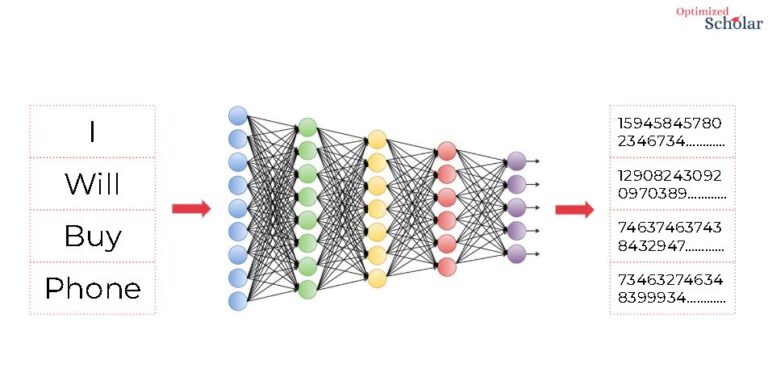Harness the Potential of Generative AI: Cutting-Edge Technologies and Industry Applications
July 7, 2024 2024-07-07 21:28Harness the Potential of Generative AI: Cutting-Edge Technologies and Industry Applications

Harness the Potential of Generative AI: Cutting-Edge Technologies and Industry Applications
Generative AI has rapidly emerged as a revolutionary technology, capable of creating new content that mimics human creativity. From generating realistic images and videos to crafting compelling text, generative AI has far-reaching implications across various industries. This blog delves into the technologies behind generative AI, how they interrelate, and their applications across industries. We will also explore how individuals can create their own AI using APIs and discuss the ethical considerations and future potential of generative AI.
Understanding Generative AI Technologies
Generative AI encompasses several advanced technologies that work together to produce novel content. Let’s explore the key components:
1. Large Language Models (LLMs)

Large Language Models, such as OpenAI’s GPT-4 and Google’s BERT, are at the heart of generative AI. These models are trained on vast amounts of text data, enabling them to understand and generate human-like text. They utilize deep learning techniques to learn patterns in language, making them capable of tasks such as text completion, translation, and summarization.
2. Embeddings

Embeddings are mathematical representations of words, phrases, or even entire documents in a continuous vector space. They capture semantic meanings and relationships between words, allowing models to understand context and nuances in language. Popular embedding techniques include Word2Vec, GloVe, and BERT embeddings.
3. Prompt Engineering
Prompt engineering involves crafting specific inputs or prompts to guide the generative AI model towards producing the desired output. By fine-tuning the prompts, users can control the tone, style, and content generated by the model. This technique is crucial for applications like chatbot development, content creation, and automated writing.
4. Fine-Tuning

Fine-tuning is the process of taking a pre-trained model and further training it on a specific dataset to tailor its performance for a particular task. This approach enhances the model’s accuracy and relevance for specific applications. For example, a general language model can be fine-tuned on legal documents to create a specialized legal assistant.
Interrelation of Technologies
These technologies are interconnected, forming the foundation of generative AI systems. LLMs leverage embeddings to understand and generate text, while prompt engineering and fine-tuning refine the output to meet specific needs. Together, they enable generative AI to produce high-quality, contextually relevant content across various domains.
Applications of Generative AI Across Industries

Generative AI has found applications in numerous industries, transforming the way businesses operate and innovate. Here are some notable examples:
1. Media and Entertainment
- Content Creation: AI-generated scripts, articles, and marketing copy save time and resources for content creators. Tools like Jasper and Copy.ai are popular for generating marketing content.
- Art and Music: AI tools like DALL-E create stunning visual art, while OpenAI’s MuseNet and Amper Music compose original music tracks
2. Healthcare
- Drug Discovery: Generative models like AlphaFold assist in predicting protein structures, accelerating the drug discovery process.
- Medical Imaging: AI-generated synthetic medical images enhance training datasets and improve diagnostic accuracy.
3. Finance
- Algorithmic Trading: Generative AI models analyze market trends and generate trading strategies.
- Fraud Detection: AI generates synthetic transaction data to train fraud detection systems.
4. E-commerce
- Personalized Recommendations: Generative AI creates personalized product descriptions and recommendations based on user preferences.
- Chatbots: AI-powered chatbots like those developed with GPT-4 handle customer inquiries and support.
Creating Your Own AI Using APIs
Building your own generative AI applications has become more accessible thanks to APIs provided by leading AI companies. Here’s a step-by-step guide:
- Choose an API Provider: Popular options include OpenAI, Google Cloud AI, and IBM Watson. Sign up for an API key.
- Define Your Use Case: Determine what you want to achieve with the AI, such as generating text, creating images, or building a chatbot.
- Craft Prompts: Use prompt engineering to design inputs that guide the AI to produce the desired output.
- Fine-Tune the Model: If needed, fine-tune the model on your specific dataset to improve performance.
- Integrate the API: Use programming languages like Python to integrate the API into your application.
- Test and Deploy: Test the AI to ensure it meets your requirements and deploy it in your application.
Ethical Considerations and Future Prospects
As generative AI continues to advance, it is crucial to address ethical considerations and anticipate future developments.
Ethical Considerations
- Bias and Fairness: AI models can perpetuate biases present in training data. Ensuring diverse and representative datasets is essential.
- Misinformation: The ability to generate realistic fake content, such as deepfakes, poses risks for spreading misinformation and manipulating public opinion.
- Intellectual Property: Defining ownership and rights for AI-generated content remains a challenge.
Future Prospects
- Enhanced Creativity: Generative AI will augment human creativity, enabling artists, writers, and musicians to explore new frontiers.
- Improved Personalization: AI will deliver highly personalized experiences in healthcare, education, and entertainment.
- Human-AI Collaboration: The future will see greater collaboration between humans and AI, leveraging each other’s strengths to solve complex problems.
Generative AI is a transformative technology with the potential to revolutionize various industries.
Final Thought
By understanding the underlying technologies and their interrelation, businesses and individuals can harness the power of generative AI to drive innovation and efficiency. As we navigate the ethical challenges and explore future possibilities, generative AI will undoubtedly play a pivotal role in shaping our digital future.
Optimized Scholar
Optimized Scholar is a leading online digital marketing institute in India, offering courses tailored for students, job seekers, business owners, and professionals. With a 4.8 rating, we have successfully trained over 5,000 learners. Our commitment lies in providing transparent, industry-standard education that fosters holistic student development.
Search
Popular posts
- Power of Generative AI: Revolutionizing Digital Marketing with Emotional Impact and Cutting-Edge Innovation
- Harness the Potential of Generative AI: Cutting-Edge Technologies and Industry Applications
- Conquer the E-commerce Everest: India’s Omnichannel Mastery Guide
- Craft Your India Marketing Magic: Hyper-Personalization with AI (Future-Proof Your Brand)
- Speak Their Language, Win Their Hearts: The Emotional Power of Vernacular Marketing
Popular tags
